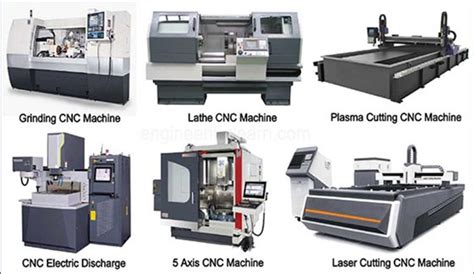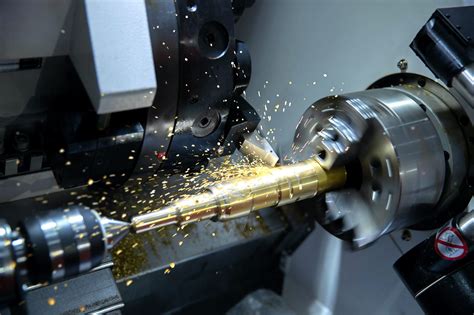cnc conventional machine With CNC machines, here are the top four advantages over traditional machines: Accuracy. You can achieve a higher level of accuracy. Additionally, using CNC technology allows you to fabricate. To connect your grid, choose from our complete range of industry-leading Raychem heat and cold shrink joints for 1-core to 3-core cables, and junction boxes to separately branch-off joints or cable junctions.
0 · list of cnc machines
1 · cnc machines meaning
2 · cnc machines for woodworking
3 · cnc machine types and names
4 · cnc machine for home use
5 · cnc machine company
6 · cnc machine basic knowledge
7 · cnc machine abbreviation
These metal office buildings are built to house a significant number of .

CNC machining has automated the processes that were traditionally done by manually operated equipment. This technology uses computerized controls to shape raw materials into intricate designs with . NC vs CNC: NC (numerical control) and CNC (computer numerical control) are two types of machining tools that transform stock materials into finished products or parts. NC features: NC machines are controlled by . In the manufacturing industry, the use of conventional and computer numerically controlled (CNC) machines is commonplace. While both machines have their advantages, it is important to understand the safety implications of . With CNC machines, here are the top four advantages over traditional machines: Accuracy. You can achieve a higher level of accuracy. Additionally, using CNC technology allows you to fabricate.
While CNC machining offers higher precision, efficiency, and automation, conventional machining allows for customization and adaptability. The choice between the two techniques ultimately . In the dynamic and competitive field of manufacturing, the ongoing debate surrounding CNC vs. Traditional Machining techniques is more relevant than ever. Both methods have distinct advantages and disadvantages, playing . CNC (Computer Numerical Control) milling is a process that is automated by computers and uses computer-programmed commands to cut and shape metal or other materials. CNC milling machines use precision tools to . CNC machining involves using automated and computer-controlled machines to work on raw materials to produce different complex parts. It is ideal for manufacturers working on .
CNC machining and conventional machining have their own characteristics. In this guide, we make a comparison between CNC machining and conventional machining from . CNC machining has automated the processes that were traditionally done by manually operated equipment. This technology uses computerized controls to shape raw materials into intricate designs with unparalleled accuracy. On the other hand, conventional machining is rooted in traditional craftsmanship.
list of cnc machines
Machining can be described as conventional, which requires manual technician prompting and manipulation of the cutting tools, or non-conventional, such as CNC machining, which relies on computer automation to drive the process. While each approach offers distinct drawbacks and advantages, both aim to produce the highest quality machined parts. NC vs CNC: NC (numerical control) and CNC (computer numerical control) are two types of machining tools that transform stock materials into finished products or parts. NC features: NC machines are controlled by prerecorded information and punched tape. In the manufacturing industry, the use of conventional and computer numerically controlled (CNC) machines is commonplace. While both machines have their advantages, it is important to understand the safety implications of each technology. With CNC machines, here are the top four advantages over traditional machines: Accuracy. You can achieve a higher level of accuracy. Additionally, using CNC technology allows you to fabricate.
While CNC machining offers higher precision, efficiency, and automation, conventional machining allows for customization and adaptability. The choice between the two techniques ultimately depends on factors such as production volume, complexity, . In the dynamic and competitive field of manufacturing, the ongoing debate surrounding CNC vs. Traditional Machining techniques is more relevant than ever. Both methods have distinct advantages and disadvantages, playing pivotal roles in .
CNC (Computer Numerical Control) milling is a process that is automated by computers and uses computer-programmed commands to cut and shape metal or other materials. CNC milling machines use precision tools to cut and shape metals and other materials with great precision and accuracy. CNC machining involves using automated and computer-controlled machines to work on raw materials to produce different complex parts. It is ideal for manufacturers working on parts that have to meet strict specifications. Conventional Machining is not automated and requires a human to prompt and control the tools. CNC machining and conventional machining have their own characteristics. In this guide, we make a comparison between CNC machining and conventional machining from many aspects, hoping to provide some valuable reference for the improvement and development of machining process.
CNC machining has automated the processes that were traditionally done by manually operated equipment. This technology uses computerized controls to shape raw materials into intricate designs with unparalleled accuracy. On the other hand, conventional machining is rooted in traditional craftsmanship. Machining can be described as conventional, which requires manual technician prompting and manipulation of the cutting tools, or non-conventional, such as CNC machining, which relies on computer automation to drive the process. While each approach offers distinct drawbacks and advantages, both aim to produce the highest quality machined parts. NC vs CNC: NC (numerical control) and CNC (computer numerical control) are two types of machining tools that transform stock materials into finished products or parts. NC features: NC machines are controlled by prerecorded information and punched tape.
In the manufacturing industry, the use of conventional and computer numerically controlled (CNC) machines is commonplace. While both machines have their advantages, it is important to understand the safety implications of each technology. With CNC machines, here are the top four advantages over traditional machines: Accuracy. You can achieve a higher level of accuracy. Additionally, using CNC technology allows you to fabricate.
cnc machines meaning
While CNC machining offers higher precision, efficiency, and automation, conventional machining allows for customization and adaptability. The choice between the two techniques ultimately depends on factors such as production volume, complexity, .
In the dynamic and competitive field of manufacturing, the ongoing debate surrounding CNC vs. Traditional Machining techniques is more relevant than ever. Both methods have distinct advantages and disadvantages, playing pivotal roles in .
CNC (Computer Numerical Control) milling is a process that is automated by computers and uses computer-programmed commands to cut and shape metal or other materials. CNC milling machines use precision tools to cut and shape metals and other materials with great precision and accuracy. CNC machining involves using automated and computer-controlled machines to work on raw materials to produce different complex parts. It is ideal for manufacturers working on parts that have to meet strict specifications. Conventional Machining is not automated and requires a human to prompt and control the tools.

cnc machines for woodworking
cnc machine types and names
If you can dream it we can bring it to life. We can provide one off pieces or large runs of 100 or more. Copyright © 2020 TWISTED METALS WELDING & FABRICATION, LLC - All Rights .
cnc conventional machine|cnc machine for home use